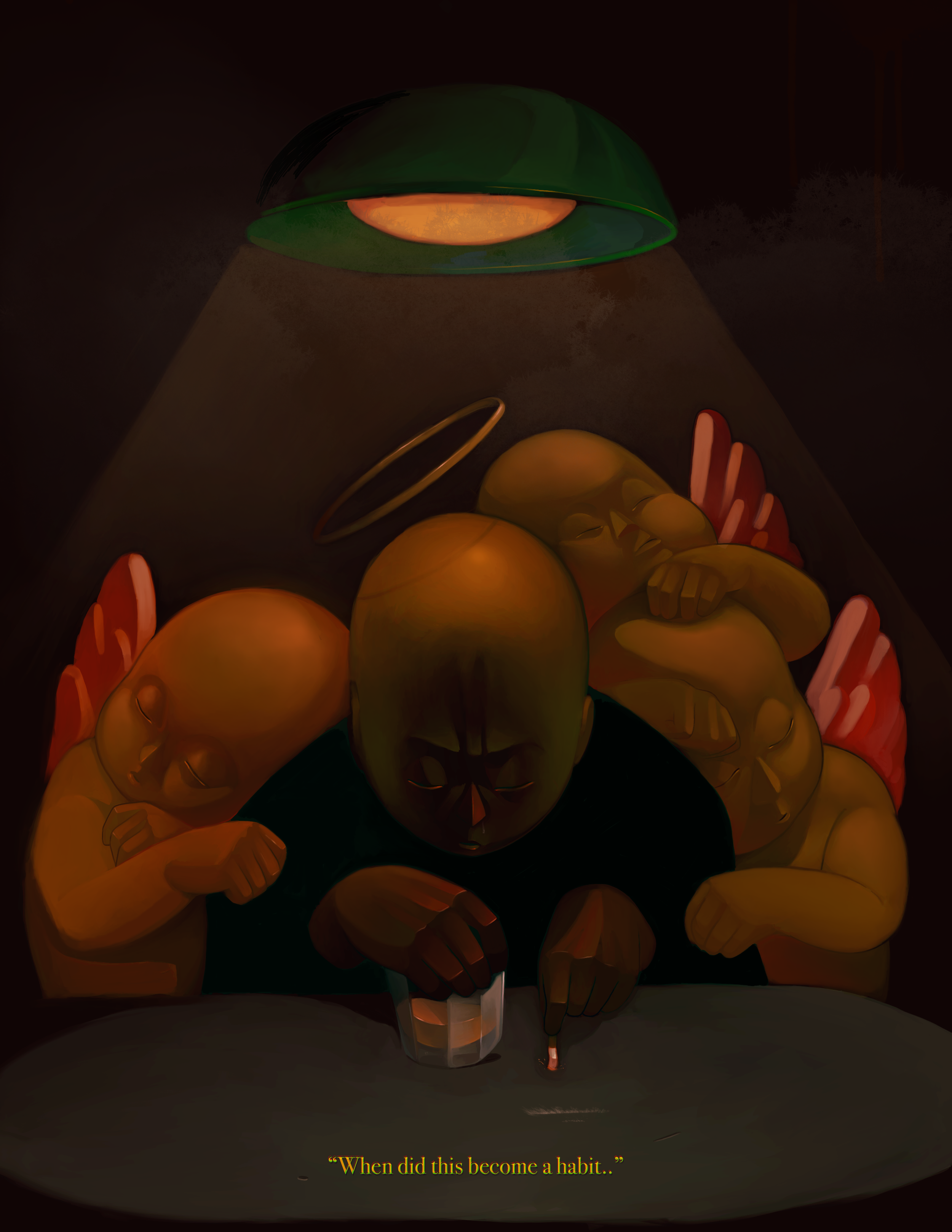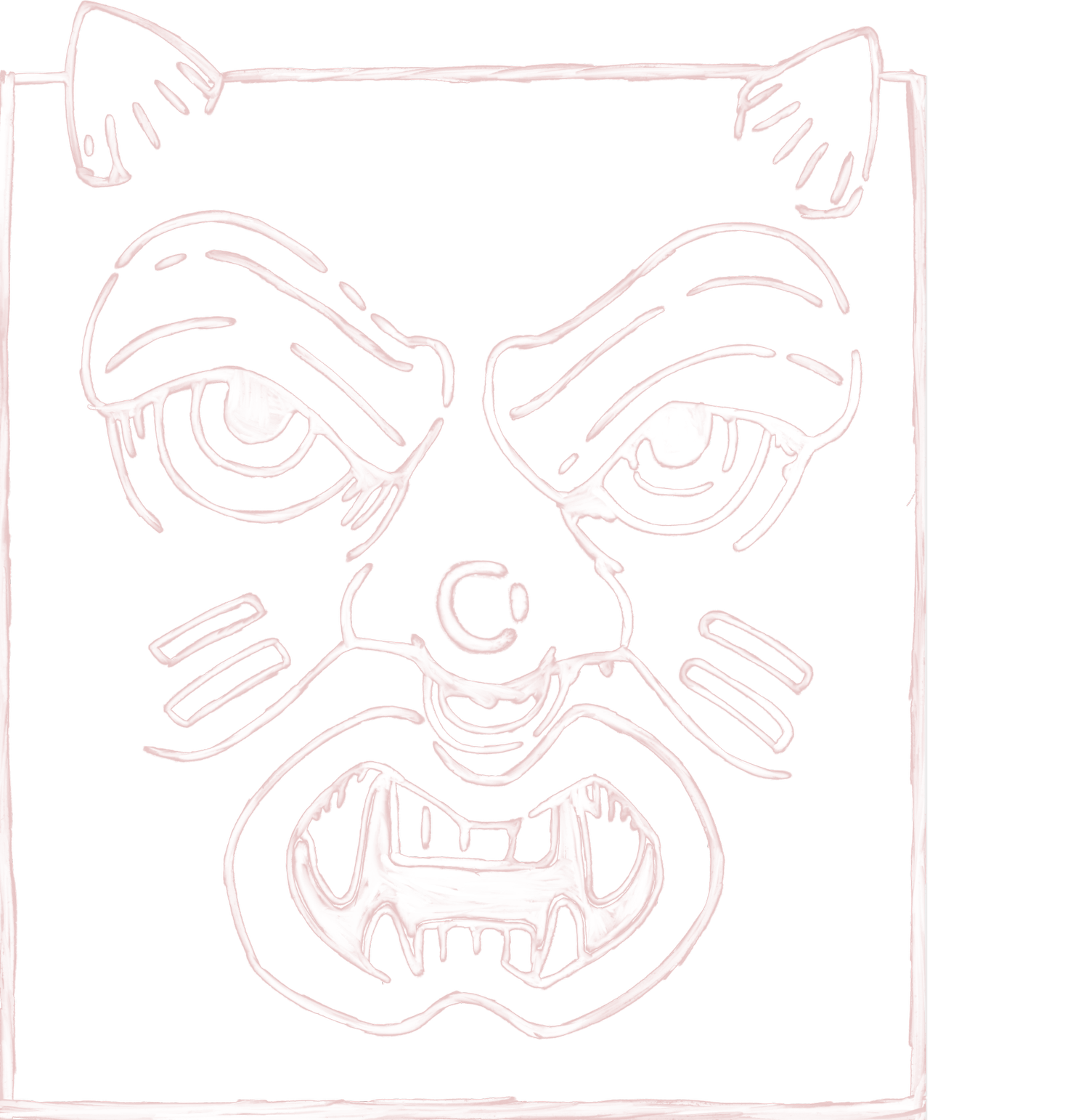 Image 1 of 1
Image 1 of 1


“When did this become a habit?..”
by Goliath
“In this haunting yet tender portrayal, the subject sits within the dim confines of a bar, a solitary figure bathed in the slanted glow of a single overhead lamp. The light casts a fractured halo around him, a stark contrast to the shadows that cling to the edges of the scene. His posture is heavy, weighed down by the invisible chains of repetition, yet there is a strange serenity in his stillness. The table before him is a tableau of indulgence—scattered white powders, the faint trails of ash from a forgotten cigarette, and a glass half-empty, or perhaps half-full, depending on the perspective.
Surrounding him are baby angels, their forms soft and luminous, their presence both comforting and unsettling. They hover close, their tiny hands reaching out to embrace him, their faces a blend of innocence and sorrow. They are not here to judge but to witness, to offer a silent, unconditional love that seems to exist outside the bounds of his self-destruction. Their light clashes with the grim reality of the bar, creating a tension between the sacred and the profane, the divine and the human.
This piece is a meditation on the slow, almost imperceptible slide into habit, the moment when patterns harden into tradition and vice becomes ritual. The subject is caught in a liminal space, suspended between awareness and surrender, between the desire to break free and the comfort of familiarity. The angels, though gentle, serve as a mirror to his inner turmoil, reflecting the parts of himself he has neglected or abandoned.
The fractured halo above him is a symbol of his fractured self—a reminder that even in the midst of his descent, there is still a glimmer of something sacred, something worth saving. The piece asks not for condemnation but for understanding, for a recognition of the ways in which we all lose ourselves in the cycles we create. It is a quiet plea to pause, to reflect, and to ask, as the title suggests, When did this become a habit?..
Through its interplay of light and shadow, innocence and decay, this work captures the duality of human struggle—the ways in which we are both the architects of our own undoing and the bearers of an inherent, unshakable grace."
by Goliath
“In this haunting yet tender portrayal, the subject sits within the dim confines of a bar, a solitary figure bathed in the slanted glow of a single overhead lamp. The light casts a fractured halo around him, a stark contrast to the shadows that cling to the edges of the scene. His posture is heavy, weighed down by the invisible chains of repetition, yet there is a strange serenity in his stillness. The table before him is a tableau of indulgence—scattered white powders, the faint trails of ash from a forgotten cigarette, and a glass half-empty, or perhaps half-full, depending on the perspective.
Surrounding him are baby angels, their forms soft and luminous, their presence both comforting and unsettling. They hover close, their tiny hands reaching out to embrace him, their faces a blend of innocence and sorrow. They are not here to judge but to witness, to offer a silent, unconditional love that seems to exist outside the bounds of his self-destruction. Their light clashes with the grim reality of the bar, creating a tension between the sacred and the profane, the divine and the human.
This piece is a meditation on the slow, almost imperceptible slide into habit, the moment when patterns harden into tradition and vice becomes ritual. The subject is caught in a liminal space, suspended between awareness and surrender, between the desire to break free and the comfort of familiarity. The angels, though gentle, serve as a mirror to his inner turmoil, reflecting the parts of himself he has neglected or abandoned.
The fractured halo above him is a symbol of his fractured self—a reminder that even in the midst of his descent, there is still a glimmer of something sacred, something worth saving. The piece asks not for condemnation but for understanding, for a recognition of the ways in which we all lose ourselves in the cycles we create. It is a quiet plea to pause, to reflect, and to ask, as the title suggests, When did this become a habit?..
Through its interplay of light and shadow, innocence and decay, this work captures the duality of human struggle—the ways in which we are both the architects of our own undoing and the bearers of an inherent, unshakable grace."
